Nine spots on the Boston Marathon route not to miss from the starting line to the finish
For 26.2 miles, the Boston Marathon route winds eastward through the streets of MetroWest before finishing in Boston.
The Marathon passes through eight communities, each containing its own bit of history. Starting in Hopkinton, the course winds down Route 135 through Ashland, Framingham, Natick and Wellesley, where it joins Route 16, according to the Boston Athletic Association website.
It continues along Route 16 through Newton Lower Falls, turning right onto Commonwealth Avenue (Route 30). It then goes through Newton Hills, before bearing right onto Chestnut Hill Avenue to Cleveland Circle. Then it veers onto Beacon Street, continuing through Brookline and Kenmore Square.
One more right (onto Hereford Street) and one more left (onto Boylston Street) and you're done.
But there's plenty along the route to see. Here's a list of memorable sights and spots:
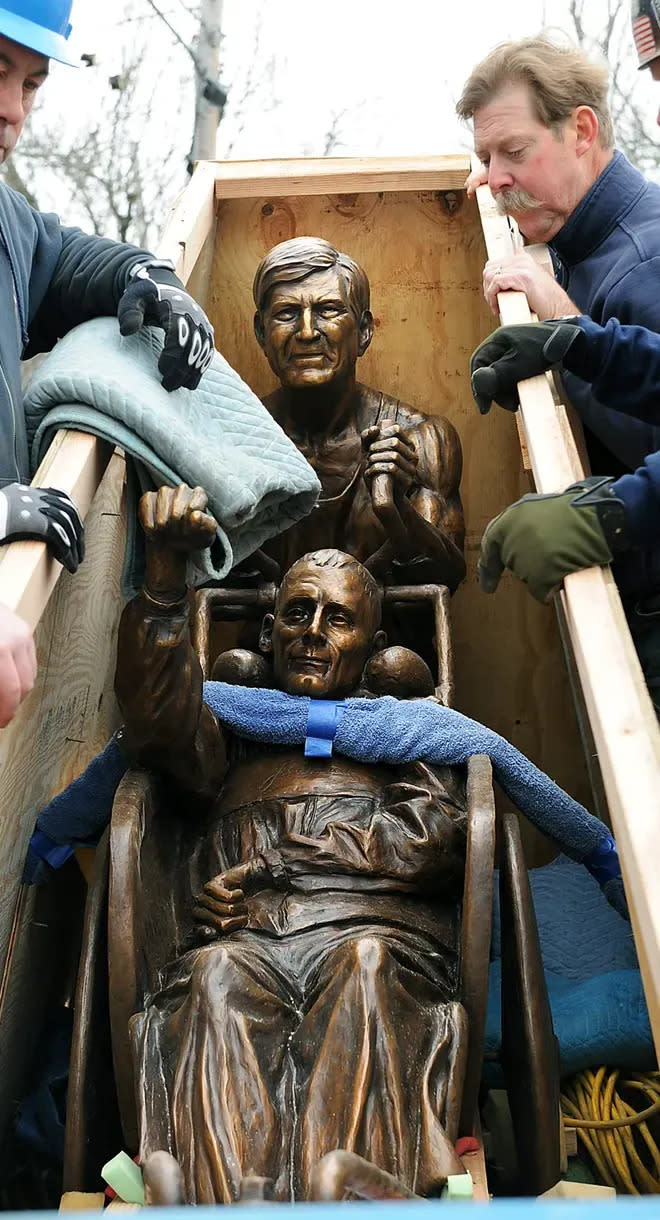
Hoyt statue, Hopkinton
Perhaps no one is more synonymous with the Boston Marathon than the father-and-son running duo of Dick and Rick Hoyt. In 2013, sculptor Mike Tabor created a statue commemorating them that is located near the starting line in Hopkinton.
Dick Hoyt died in 2021, at age 80, and Rick Hoyt died last May, at 61. But Team Hoyt, a running group that raises money for the disabled, still competes in the Marathon every year.
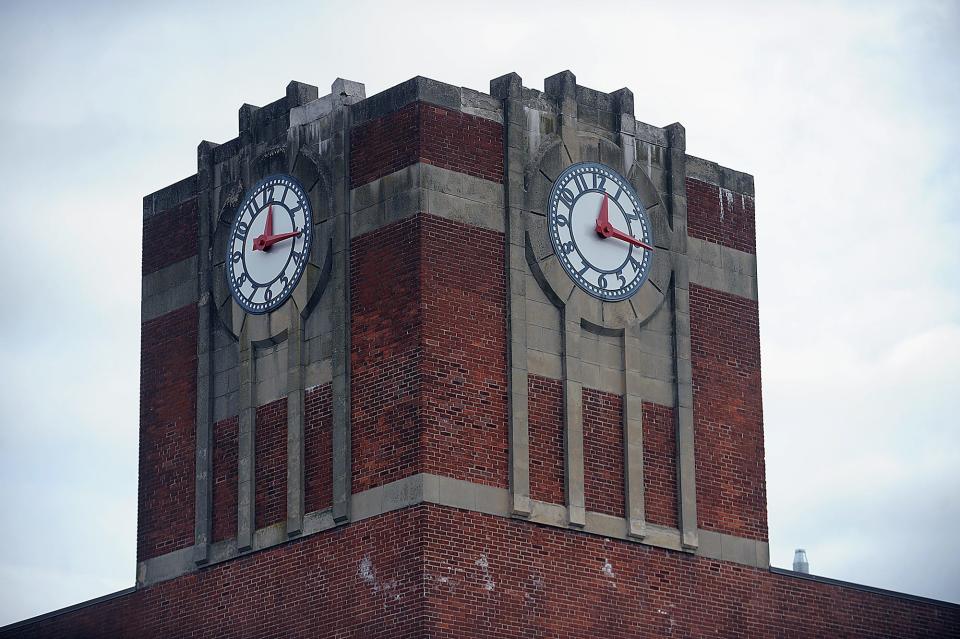
Ashland Clock Tower
The Ashland Clock Tower, at 200 Homer Ave., is a clear and obvious landmark during the early stages of the Boston Marathon.
Located at about Mile 3, the clock tower is a major symbol of Ashland's history. It was there that Henry Warren invented the synchronous electric clock in 1918. Ashland High School's athletic teams are still known as the Clockers.
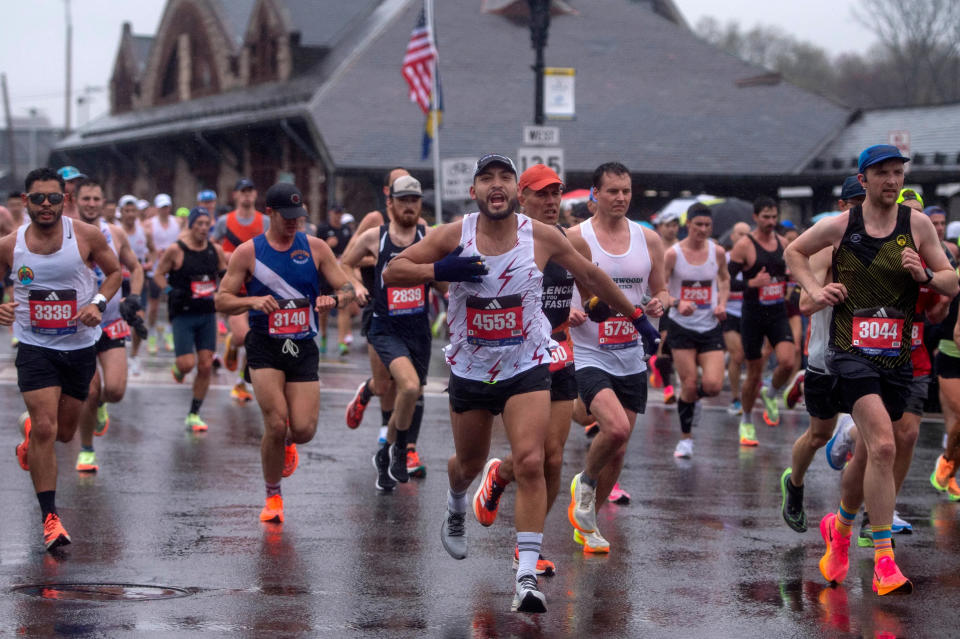
South Framingham train station
A key gathering spot for spectators during the first half of the marathon route, the South Framingham Train Station at 417 Waverly St. (Route 135) is among the loudest sections of the course in MetroWest. Runners, though, should be on the lookout to make sure the coast is clear when they cross the tracks.
"When I get to the South Framingham train station, I always remember the story of when a train cut right through the course and cut off the field from the lead pack of about a half-dozen runners," said Paul Clerici, a 23-time Boston Marathon runner and a historian who has written several books on the history of the Marathon. "That occurred in 1907, but I still look both ways when I cross over the railroad tracks."
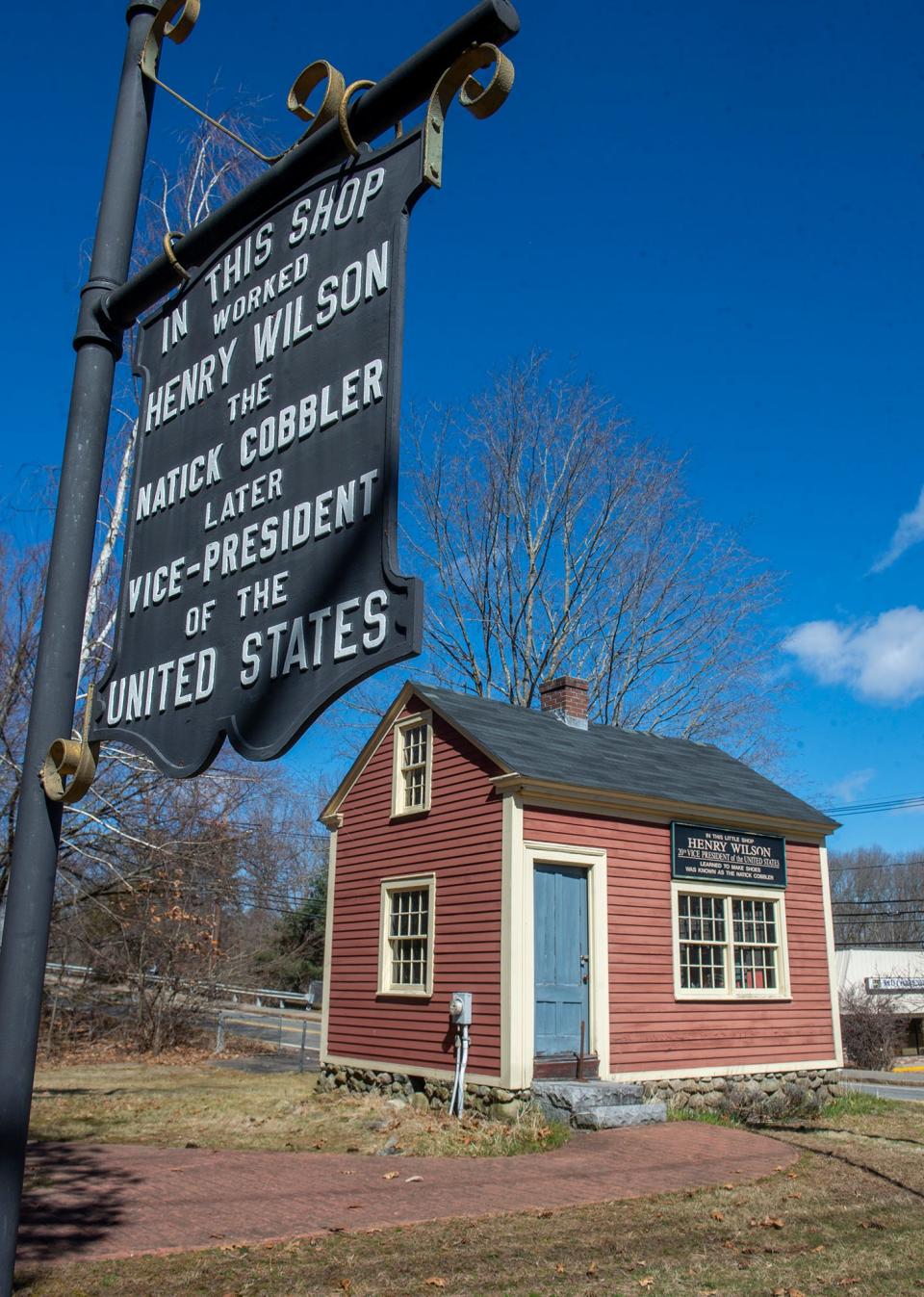
Henry Wilson shoe shop, Natick
This shoe shop that was owned by a future vice president of the United States is among the historic gems of the Marathon course. Blink and you'll miss the tiny cobbler's shop that was owned by Henry Wilson, who would later become a U.S. senator and then Ulysses S. Grant's vice president from 1873-75.
The shop is at 81 West Central St. (Route 135).
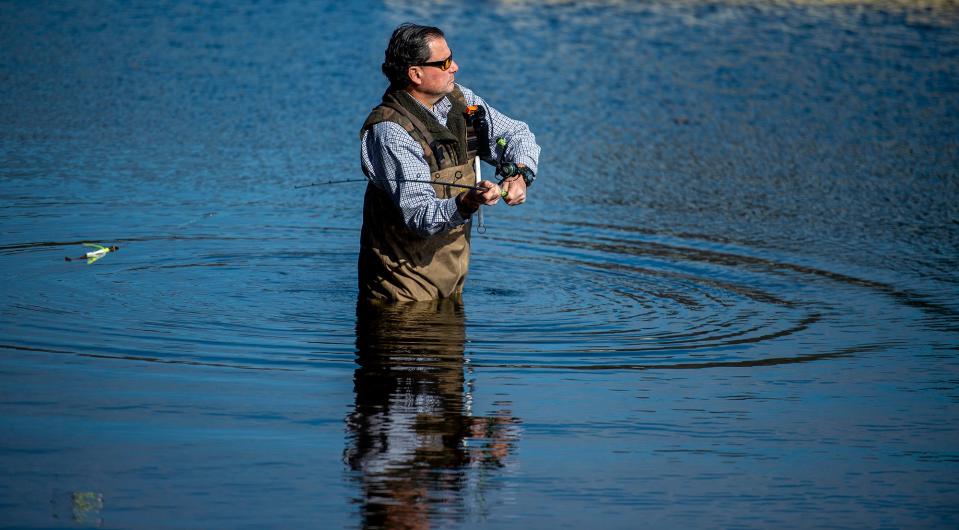
Lake Cochituate, Natick
After runners pass through the hustle-and-bustle of downtown Framingham and Natick, they'll approach a more scenic view when running by Lake Cochituate. On particularly warm days, runners may be tempted to take a dip, Clerici admitted.
"Whenever I run by Lake Cochituate in Natick, I think of Ellison Brown," Clerici said. "He won Boston twice (1936 and 1939), and reportedly during one hot Boston he cooled himself off in the lake and then continued on running. There have been a couple of hot Bostons when I thought about doing that, too."
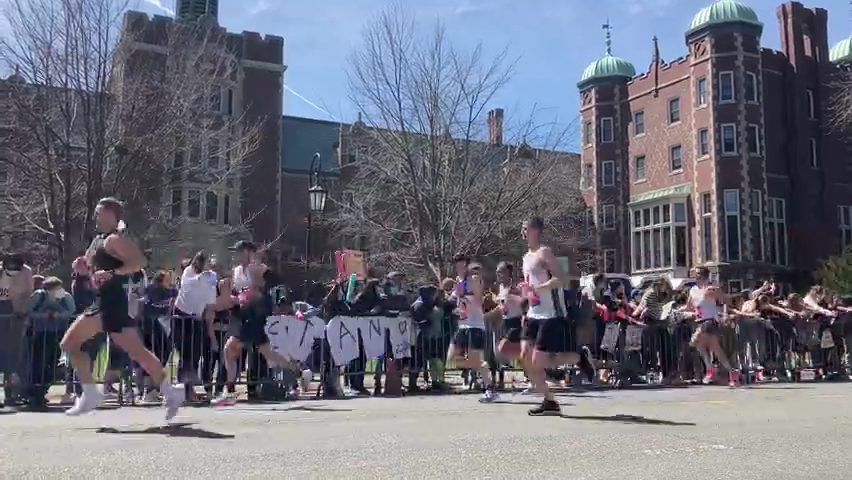
Wellesley College
Students at Wellesley College cheering on runners has been a staple of the Marathon route for generations. The so-called "scream tunnel" is known for featuring some of the route's loudest moments, and can give runners a needed boost as they near the halfway point of the race.
"Every time I run Boston, I always look forward to seeing and hearing the Wellesley College women who cheer us on the whole day. They're amazing," Clerici said. "Their support and loud energy always gets you going and gets you through to the halfway point in Wellesley Center."
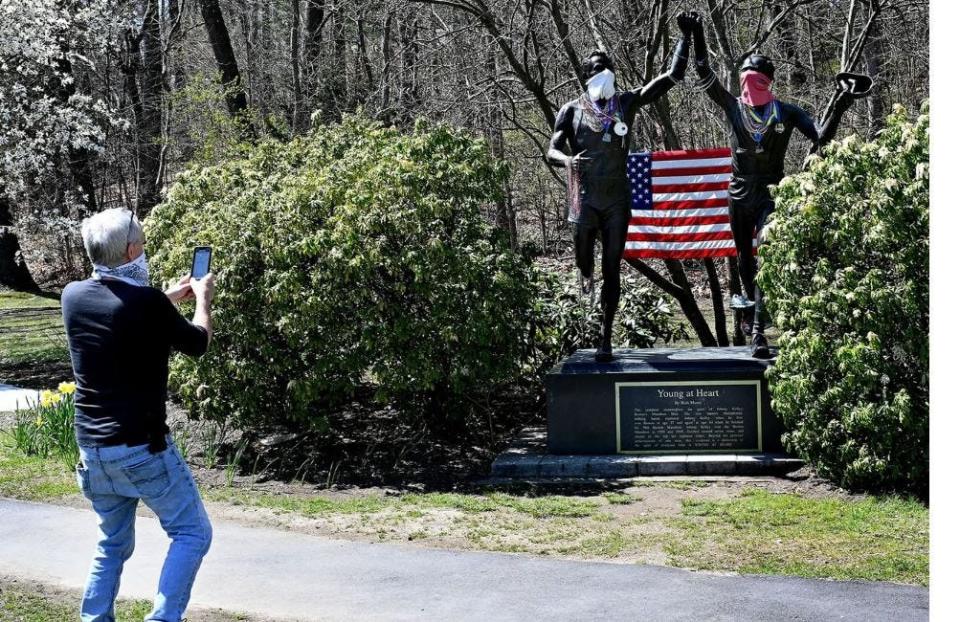
Young at Heart statue, Newton
An iconic statue in Newton, this statue, which depicts Boston Marathon legend Johnny Kelley at age 27 and 84, signifies the history of Kelley, who ran Boston a record 61 times (and won it twice, in 1935 and 1945). The statue is about a mile before the dreaded Heartbreak Hill, a long stretch of sloped Commonwealth Avenue road that lies around Mile 20.
"When I reach Newton, I always glance over to the 'Young at Heart' statue of Johnny 'The Elder' Kelley," said Clerici, distinguishing Kelley from John J. ("The Younger") Kelley, the 1957 Boston Marathon winner. "It's about a mile before Heartbreak Hill, whose name is attributed to him for his 'heartbreaking' move in 1936 when he caught up to Ellison Brown and tapped him on the back, which kind of woke up Ellison and he took off and won and Johnny came in fifth. It's a reminder for me to run smart up Heartbreak."
Kenmore Square, Boston
The last mile of the marathon occurs when runners head into Kenmore Square, and comes as a relief, according to Clerici. It means the race is nearly over, and that runners will make it.
"Kenmore Square is great because there's only one mile to go and unless you have a broken leg, you're going to make it," Clerici said. "The support over that last mile, especially, is tremendous; almost like a wave that pushes you through."

Boylston Street, Boston
Of course, nothing can match the energy of the final stretch of the Marathon on Boylston Street, as runners begin Mile 26, knowing they're nearing the finish line.
"Taking that left onto Boylston Street from Hereford Street is surreal," Clerici said. "Mile 26 is just up ahead and the cheers are thunderous! You want those last few blocks to last forever, so you can soak up all that support, but you also want to finally stop running. It's a complex stretch of the race, but so rewarding."
This article originally appeared on MetroWest Daily News: Boston Marathon: Nine landmarks to enjoy on the 26.2-mile route

